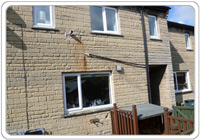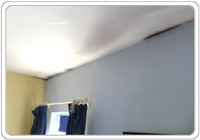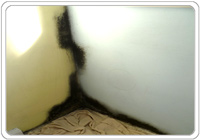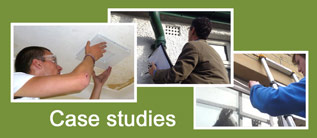
Case study: A mid-terrace house in north Yorkshire with mould problems
The problem
This property suffered from severe mould in the bedrooms which would quickly return when it had been cleaned. However there was no mould in the rooms on the ground floor. Both of the occupants were in their 60’s and suffered from occasional breathing difficulties. Tests showed that the relative humidity in the house was higher than desirable.
Our assessment
As part of our survey we are interested to understand – amongst other things - how a home is used, and if there have been any changes in the house. In this case the only significant change had been the removal of the coal fire and a small wood burning stove put in its place. The loft was well insulated but we checked the walls for cavity wall insulation and found that they were not insulated. Although the house was well heated it was our view that the mould was caused by warm humid air rising to the upstairs rooms. The lack of cavity wall insulation meant that humid air could easily condense on these colder walls. In such circumstances it does not take long for mould to form and without remedial action it becomes a long term problem. The loft was very air tight – a common problem, and not good for the roof timbers. Excessive humidity in the timbers over a long period can lead to wet or dry rot, and make the timbers more attractive to wood-worm.
Our solution
Our approach in this property was to improve the insulation where possible and introduce managed fresh air.
We arranged for vented slates to be installed in the roof – doing this reduced the moisture content in the timbers to ‘safe’ levels. Lofts should be draughty but well insulated.
We then installed a Positive Ventilation system. The unit we installed had a ‘heat harvesting’ option. It is sometimes the case that the loft can be warmer than the inside of the house. When this happens sensors detect the higher loft temperature and the unit runs at an increased speed to take advantage of the ‘free’ heat.
We also installed two passive vapour vents in the two problem bedrooms.
Finally the cavity walls were insulated – we were able to arrange for this work to be done at no cost under a grant available at the time. Insulating the walls has the effect of making them less ‘attractive’ to condensation, and of course helps keep the house warmer.
See our page on solutions for condensation problems for further information.
High humidity + inadequate ventilation
= damp, condensation, mould

UK government advises:





